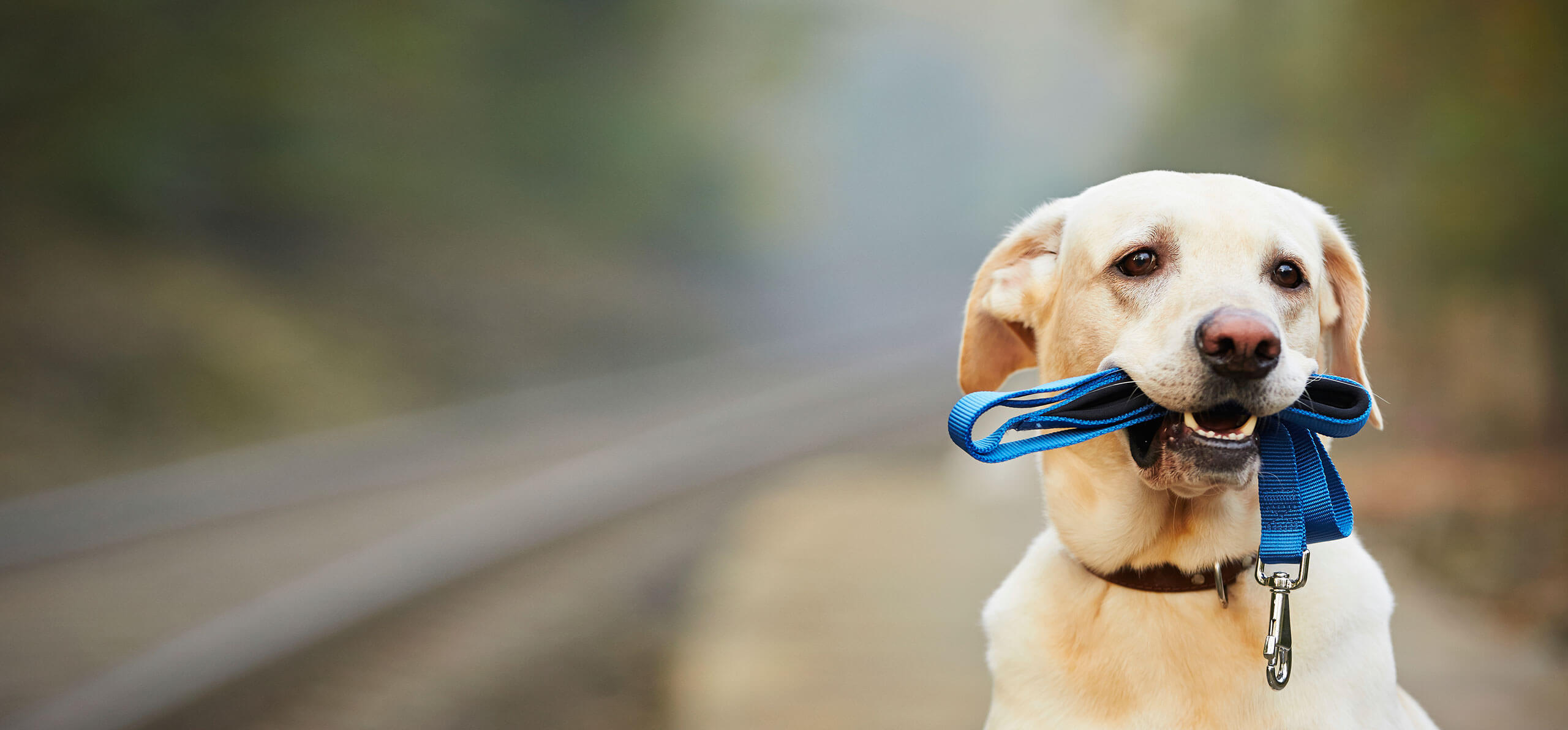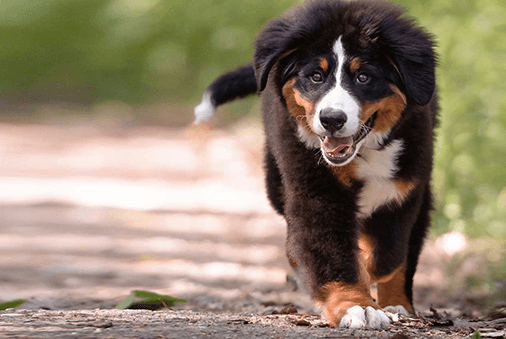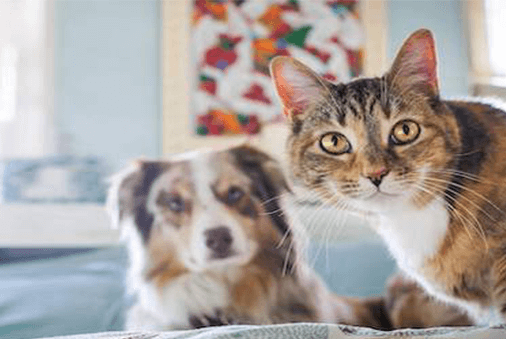That’s why leash training applies to you as much as your dog. Proper dog walking can turn a tug of war into a pleasurable experience for both of you.
Healthy walking behaviors will help you avoid common problems like leash pulling, which can be dangerous for you and your best pal. If your dog pulls hard enough you may lose your grip and he could run off or he could drag you to the ground.
Here are some ways to keep both of you safe:
Be the front man
There’s a reason it’s called follow the LEADER. Whoever walks in front controls the journey, which is why you don’t want your dog in front of you. Ideally he should walk beside or behind you so that you’re the pack leader.
Other ways you can lead:
- Train your dog to wait for it. Whether he learns to grab his leash or not, have him sit patiently while you attach the leash to his collar.
- Be the first one out the door; don't let your dog drag you.
Shorten the leash
Shorter leashes give you more control. Leashes that attach to collars worn at the top of your pooch’s neck, directly behind their ears, make it easier for you to guide and correct your dog during the walk. Keep it short, but not tight and have your dog’s head up.
Collars count
Cupcakes, pawprints, embroidered names–there are myriad designer collars you can get for your pup but consider function over fashion when you buy one.
Avoid collars that fit around the base of your pooch’s neck; they can actually encourage leash pulling. The lower part of your dog’s neck is one of the strongest parts of his body, giving him a lot of pull power. If your leash is at the bottom part of his neck when he pulls, it can press on his trachea, which can be dangerous. Collars that fit at the top of the neck give you more control and safety.
Harness positive energy
Having the right attitude helps. A lot. Your dog will pick up on any anxiety you may feel during the walk, so try to stay calm and assertive.
If your dog is a puller even after lots of leash training, consider using a front-clip harness to walk him, or training collars that fit around his muzzle to discourage pulling.
Keep in mind, many dogs pull because they don’t like walking; they’d rather run. So before you try to change that built-in behavior, join them. Let them run while leashed to exhaust their extra energy. You can jog, rollerblade or bike beside them, as long as your doctor and the veterinarian say it’s okay for both of you to exert yourselves this way.
Reward. Reward. Reward.
Positivity is all about reinforcement. And rewards. Simple leash training starts by rewarding your dog when he pays attention to you and when he walks beside or closely behind you.
After reaching a comfortable stride for both of you, say “YES” and reward your pup with a treat each time he looks at you and walks beside you. Acknowledge and “treat” each and every display of good leash manners.
Rewarding your dog frequently with his favorite healthy treats is important when you start leash training. Once he gets the hang of well-behaved walking, wean off the frequent treats and reward with simple pleasures, like stopping to conduct his social and private business.
Unlike you, sniffing around for friends and relieving himself are highlights of his walk. As pack leader, you control when rest time is over, making sure it’s less than walk time.
Post-promenade reward
Keep leading and rewarding your pal after the walk is over. Command your pooch to sit while you put his leash away. Then give him his meal; he’ll associate the walk as working for his food and water, which is positive reinforcement at its best.
Leash training pups
In the beginning, your little guy may just want to sit and play, not wear some silly collar contraption. Encourage your puppy to get up and out by picking him up and taking him outside.
Puppies, and older dogs who’ve slowed down, can respond well to follow-the-leader games. Back away from your dog several steps, while still holding his attached leash.
Moving backwards will cause your pup to turn and follow. Give him a great big “YES!” and reward him with a treat. This will get him used to following you no matter which direction you go.
Take it outside
Morning is the ideal time to walk your dog for at least an hour. If you can’t carve out a full hour shoot for thirty minutes. Of course, each dog has specific needs so be sure to check with your veterinarian before beginning your canine’s routine, especially when he’s a pup or senior dog.
Like any skill, leash training takes practice, patience, time, and treats. Get out there and start hiking. It’s good for your dog’s physical and mental health. And good for yours!
| Safety Tips for Nightwalkers |
|---|
|
Although morning walks are ideal, busy human schedules don’t always make it possible for pet parents to walk their furry family members in the A.M.s. That’s when after-work, evening walks become necessary, which often means walking your dog in the dark.Here are some things you can do so you’re not in the dark when it comes to nighttime safety.
|





